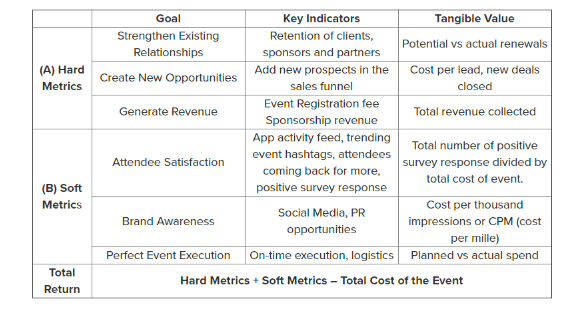

Have you ever stood in a room of hundreds of attendees, at your sponsored stand where you have spent thousands of pounds, with your iPad and free water bottles or pens, wondering what will I get in return for this?
Tracking the Return on Investment (ROI) of events can be a multifaceted process, involving various metrics and approaches. Often, we get asked by our clients ‘How do I know if it is worth spending money sponsoring an event?’ or ‘What’s the investment in me attending industry events?’
Our answer every time is that there are other ways of measuring the impact of your marketing spend, other than ROI. Due to the nature of events and the lack of tangible immediate output, tracking ROI for events can be extremely challenging and hard to justify. This is often down to several factors which are most of the time not even in our control such as:
Events involve numerous touchpoints and interactions, making it challenging to capture and consolidate data effectively. Attendee behavior, availability, engagement levels, and interactions across various channels (such as social media, email, and in-person interactions) need to be tracked. This requires sophisticated data collection methods and technologies which sometimes aren’t always possible.
Events often serve multiple objectives, such as lead generation, brand awareness, customer engagement, and thought leadership. Each objective may have its own set of KPIs and metrics, making it difficult to measure overall ROI comprehensively.
The impact of events on sales and revenue generation may not be immediately apparent. Attendees may need time to convert into customers within the sales/marketing funnel, or make purchasing decisions, resulting in a longer sales cycle. Tracking these conversions and attributing them directly to the event can be challenging and will also be implicated by your sales pipeline/CRM.
Events often provide intangible benefits such as brand exposure, networking opportunities, and relationship building, which are challenging to quantify in monetary terms. While these benefits contribute to the overall value of the event, they may not be easily measurable in traditional ROI calculations.
Ensuring the accuracy and consistency of data collected from various sources can be challenging. Discrepancies in data quality, incomplete data sets, or inconsistencies in measurement methodologies can affect the reliability of ROI calculations.
Events involve numerous expenses, including venue rental, marketing materials, staff wages, travel expenses, and technology investments. Allocating these costs accurately to specific objectives or outcomes can be complex, affecting the calculation of ROI.
Many organisations lack the resources, expertise, or tools required to track event ROI effectively. Implementing robust data collection methods, analytics tools, and attribution models may require significant investments in time, technology, and talent.
Your company can in fact gain valuable insights into the success of an event investment in other more meaningful ways. This includes understanding attendee behaviours and preferences to identify areas for improvement to enhance future event strategies.

If you need top tips on how to track the real impact of events effectively when ROI is challenging to measure, get in touch!


